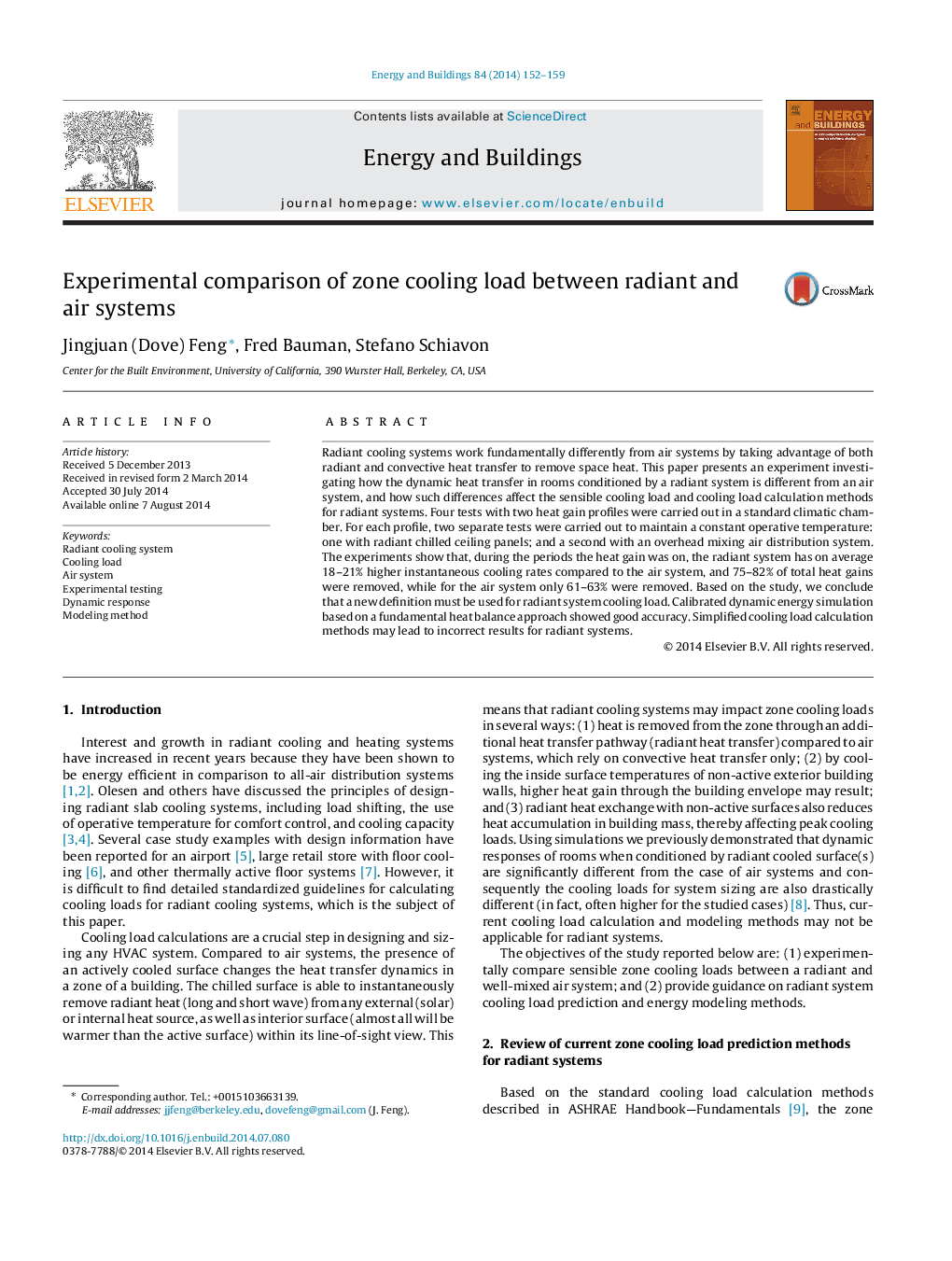| Article ID | Journal | Published Year | Pages | File Type |
|---|---|---|---|---|
| 262867 | Energy and Buildings | 2014 | 8 Pages |
•We experimentally compared cooling loads between radiant and air systems.•Radiant system has on average 18–21% higher cooling rates compared to air system.•A new definition must be used for radiant system cooling load.•HB approach should be used for radiant system cooling load calculation.•RTS or weighting factor methods may lead to incorrect results for radiant systems.
Radiant cooling systems work fundamentally differently from air systems by taking advantage of both radiant and convective heat transfer to remove space heat. This paper presents an experiment investigating how the dynamic heat transfer in rooms conditioned by a radiant system is different from an air system, and how such differences affect the sensible cooling load and cooling load calculation methods for radiant systems. Four tests with two heat gain profiles were carried out in a standard climatic chamber. For each profile, two separate tests were carried out to maintain a constant operative temperature: one with radiant chilled ceiling panels; and a second with an overhead mixing air distribution system. The experiments show that, during the periods the heat gain was on, the radiant system has on average 18–21% higher instantaneous cooling rates compared to the air system, and 75–82% of total heat gains were removed, while for the air system only 61–63% were removed. Based on the study, we conclude that a new definition must be used for radiant system cooling load. Calibrated dynamic energy simulation based on a fundamental heat balance approach showed good accuracy. Simplified cooling load calculation methods may lead to incorrect results for radiant systems.
Graphical abstractComparison of measured and predicted instantaneous cooling rates using heat balance (HB) method (A) and using radiant time series (RTS) method (B) for radiant and air systems: 1080-W test.Figure optionsDownload full-size imageDownload as PowerPoint slide
